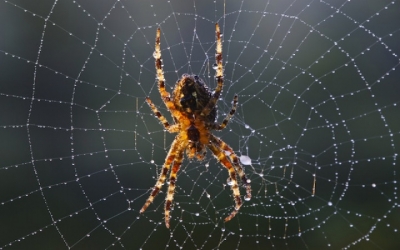Do spiders spin silk?

The word spider invariably evokes visuals of stunningly beautiful and intricate webs. But do you know not all spiders spin webs? Yes, you read that right. There are a few varieties that do not spin webs at all. However, what is interesting is that all spiders produce silk. Which means their silk has several uses other than just spinning the web. This silk a strong, flexible protein fibre - is used as a tether for safety in case of a fall; to create egg sacs: to wrap up prey: to make nests, etc.
Spiders have structures called spinnerets on their abdomen: these are their silk-spinning organs. Most of them have a cluster of spinnerets, though the exact number differs with species. The silk is a liquid before it comes out. While the fact that it has many uses is fascinating, what is intriguing about spider silk is its strength. Most of them are said to be five times stronger than steel. And a study in 2018 revealed how the silk gets its strength. When scientists analysed the silk of a specific species of spider using an atomic force microscope, they discovered that "each strand - which is 1000 times thinner than a human hair is actually made up of thousands of nanostrands”!
Trivia
There are several varieties of spider webs because different species use different patterns to construct their webs. Apparently, the webs can be categorised into orb, sheet tangle, funnel, lace, radial, and purse, based on their structure, and the webs also give a general idea about the family a spider could belong to.
Picture Credit : Google
Comments
No comments